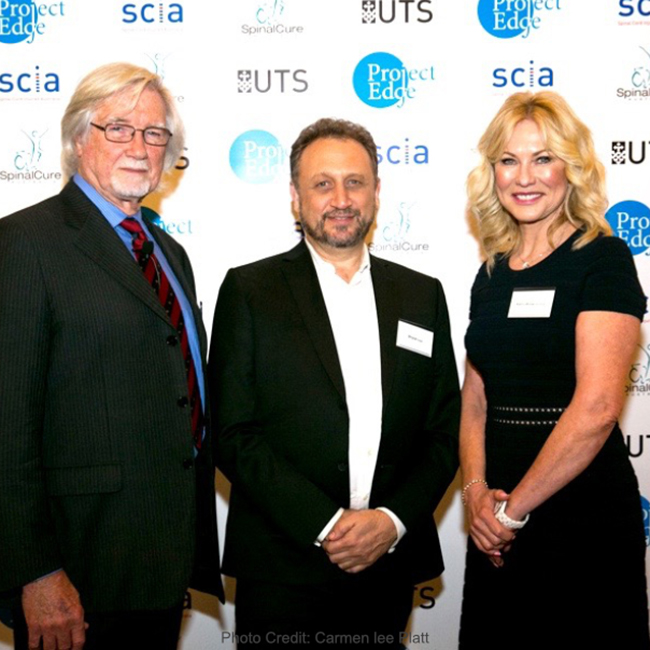Gound breaking spinal cord injury research comes to Australia. In what was once considered to be impossible, that is restoring meaningful levels of feeling and function to people who are paralysed, now holds out some hope to the 15,000 Australians living with spinal cord injuries. It uses neurostimulation or ‘currents’ of electricity to revive injured spinal cords which has resulted in 20 people regaining movement and feeling in the lower limbs.
The University of Technology Sydney has set up the Centre of Neuroscience & Regenerative Medicine, headed by UTS professor of neuroscience, Bryce Vissel. (See F2L, issue October 31). This collaboration with Professor Reggie Edgerton from the University of California, who has spent 40 years into research on fixing spinal cord injuries, will establish the first team outside the US to undertake clinical trials.
Speaking at the ‘Project Edge’ launch event in Sydney, Professor Edgerton described neuromodulation as changing the ‘mood’ of the spinal cord. “We have observed what is possible and we are seeing how far we can go with this idea. The results were better than anticipated and is the first evidence to show that voluntary function could return via transcutaneous stimulation.”
He admitted there had been resistance from the scientific community “because there is a lot of scepticism out there about the technology.”
As to how far it will go, “we don’t know. It is just the beginning and it is encouraging. What we have seen is an involuntary outcome for the lower limbs, improved trunk and grip control and increased leg strength. Secondary benefits include positive effects on bladder and bowel control and cardiovascular and sexual function.
“We have a bagful of ideas and we know what needs to be done and how quickly we can get answers depends on funding. We have never been in this situation before, for decades it has been all about what is going to work. Now we have pretty good information that tells us that we if we can take it a little further it will have a significant impact on the patient.”
Professor Reggie Edgerton, Professor Bryce Vissell and Kerri-Anne Kennerley whose husband is quadriplegic following an accident earlier this year.

